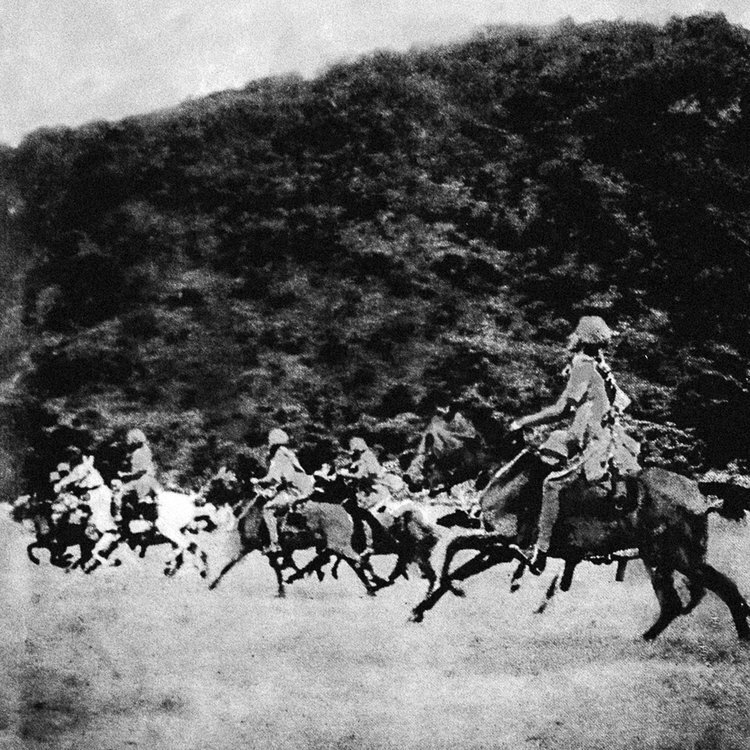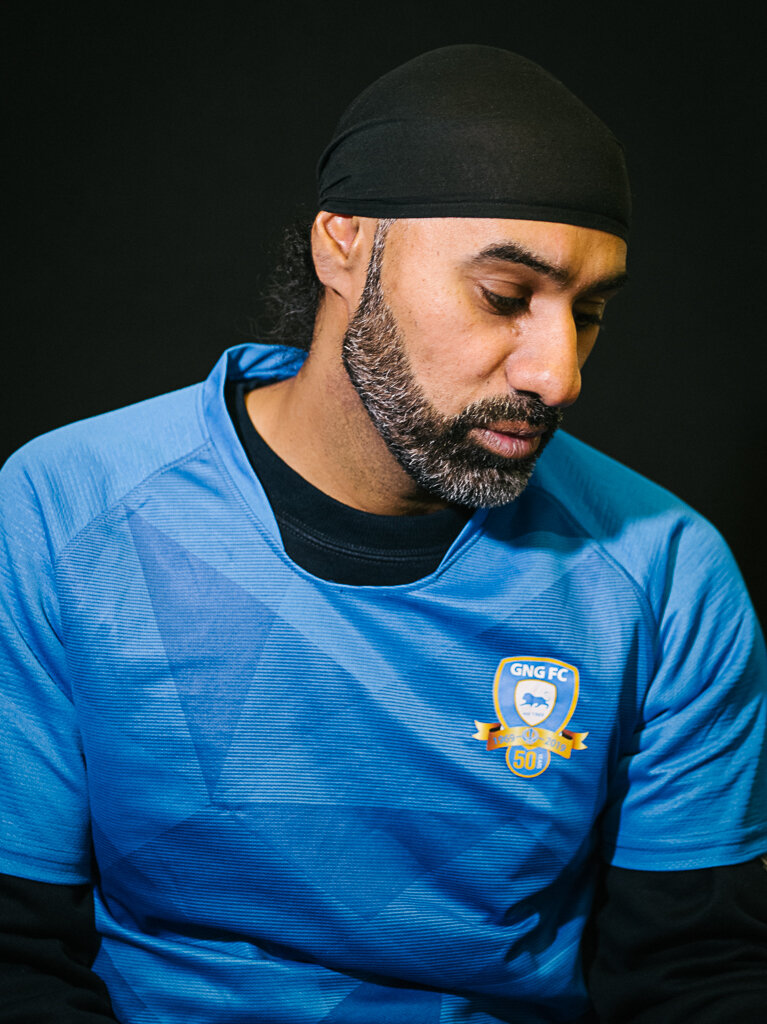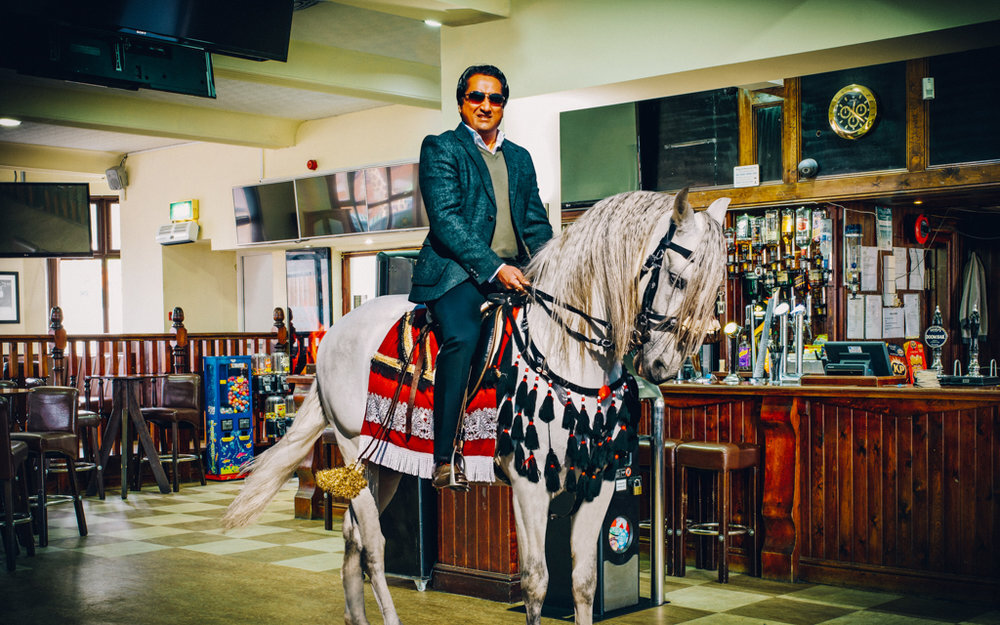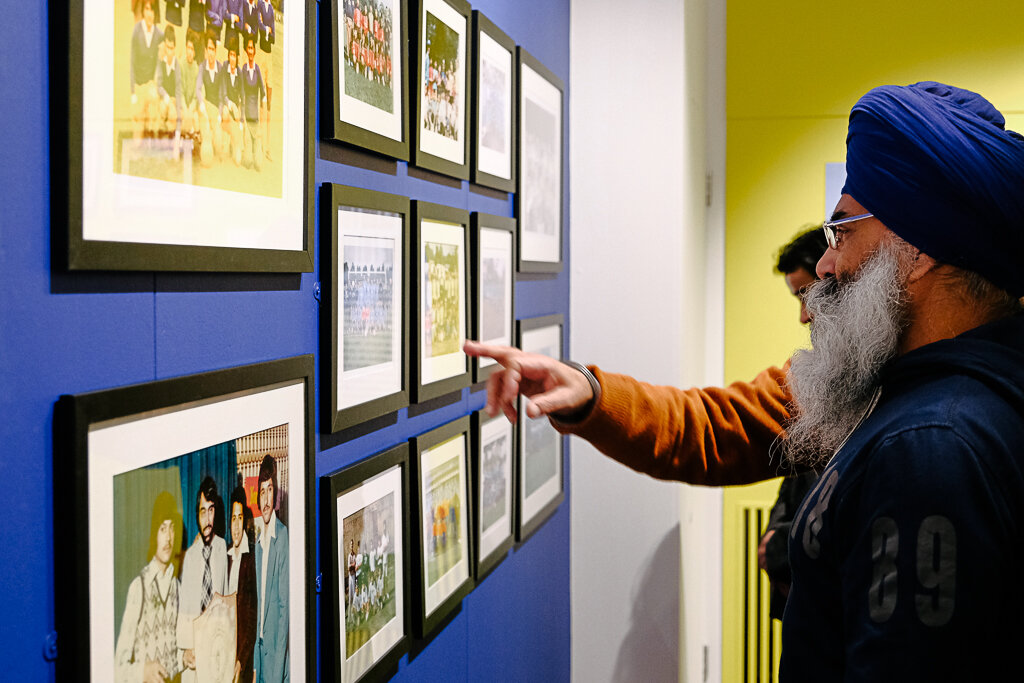Resident Interviews | Jagdish Patel
Courtesy and copyright Jagdish Patel.
Primary is home to a creative community of over 40 resident artists and makers. The Resident Interviews series provides a platform for artists at Primary to discuss and share aspects of their studio practice and ongoing research. Jade Foster, Assistant Curator (Public Programme) at Primary caught up with resident Jagdish Patel to find out what he’s been getting up to.
Jagdish Patel is a socially engaged artist, visual artist and researcher. He was raised in the Midlands and worked in London as the Deputy Director of human rights charity, the Monitoring Group. He is currently working on a research project at Coventry University looking at the interconnections between socially engaged art and anti-racism.
Jade Foster: How would you further describe your approach to creative practice?
Jagdish Patel: Because I come from a legal advisory background, the way I tend to think is that you need to know the details of what you’re doing and the substance of the material that you’re working with first. And then think about how to use it, so there tends to be a lot of research. I think naturally about the history and people involved in it.
Jade: You’ve said previously that it takes years to build up a comprehensive body of research.
Jagdish: Yeah, it does and Britain’s quite small. What you realise very quickly is how interlinked people’s lives are, which is shocking!
Jade: It’s a small world when it comes to creative ecologies and when it comes to those developing socially engaged work.
Jagdish: If you think about the elders and you go to events where you get involved in certain political things, there is a small number of people doing things. A lot of the people historically that have done something, especially the elders in the ’50s and 60s, maybe the 70s have written out the story, particularly the women. I don’t think you can write out history without finding the characters involved and trying to talk to them.
But in terms of my practice, some elements are performative. One of my previous projects, Asian Activism in Nottingham at Primary, was specifically around the NG7 area. We wanted to get the people who were photographed and involved in the project to talk about the work and ‘perform’ in the space. Within the process, the conversations and engagement are as important as the stuff we put on the wall.
Jade: So, is part of having a socially engaged practice about how you thoughtfully engage people within the process of making?
Jagdish: Yes, making, thinking and talking.
Jade: Could you talk to me about your project Breaking Ground: Race and community grassroots football.
Jagdish: I don’t know if you have watched it, but there is a programme called Robbie Lyle: Football Fans Under Their Skin on ITV. It’s the story of Black footballers facing racism in Premier League football and how it’s changed. It is good that people are telling those stories but in Leicester, 200,000 people watch football on a Saturday, this is not Premier League, this is ordinary families going out week by week supporting local clubs. That history of racism in football or how people have engaged with issues is duplicated at the grassroots level. What’s interesting when we did this project, it starts with a story of a football club over 50 years, but it becomes a story of a series of men, and men’s lives and how football helps them keep them on track and focused. It’s essentially how young men need to be part of something and how communities are formed in a way.
Jade: Anything else that you are working on that has developed recently?
Jagdish: The conversations from the Asian Activism in Nottingham project led to a group of people from Nottingham becoming involved and thinking about the story across Nottingham and the East Midlands. So that little project has turned into a slightly bigger project, where we are thinking about the connections between activists and artists historically in both the East and West Midlands. We are developing this project, and I am currently undergoing research.
As part of that conversation, we had an event at Wolverhampton Gallery last year during Keith Piper’s retrospective exhibition Keith Piper: Body Politics.Work from 1982 – 2007. We wanted to acknowledge that the first Black Art exhibition in Wolverhampton wouldn’t have happened without the history of the previous generation before Keith, who had been doing work with galleries and artists for a while. They opened up space for artists such as Eric Pembleton, who introduced Keith Piper to Wolverhampton Art Gallery. We tried to tell a story of the things pre Blk Art Group and the British Black Arts Movement (BAM) in the ’80s. Some of the work in the 50s, 60s and 70s connects with the community arts movement, so I am trying to rethink how the two interlink.
I think part of that story is linked to the industrial narrative of the Midlands. The common narrative is the commonwealth citizens who came to the Midlands that worked in the factories got the worst jobs, but when you look into it, they didn’t get the worst jobs, they got the jobs that weren’t unionised. The traditional craft jobs were the ones that were being declined and taken up by Black workers. Similar to what is happening now regarding the shifts in industry. When the Black workers and White workers became union active, the industry declined. But what happened was between the ’60s – 80s, several firms in Birmingham such as GKN, got taken over by international companies (mostly American).
Jade: Interestingly, I can see links between the Asian Activism in Nottingham project which is part of the wider Making Place programme here at Primary and your current research into the industrial narrative within the Midlands. This also connects with another project within the Making Place programme called When We Worked At Raleigh, a project led by Nottingham Black Archive with Primary which documents the experiences of members of the Windrush generation and their descendants who worked for Raleigh Industries between the 1950s–1980s.
Within this context, I would say the type of practice that you do is a form of visual activism.
Jagdish: Certainly, yes! Its visual activism and some type of collaboration as well, it’s about bringing people together to think.
Jade: I am also thinking back to your exhibition in late 2019 at New Art Exchange, When The Snow Melts: The World Wars, Empire and Muslim Soldiers. In terms of the process of giving credit to the people involved in the projects, do you see yourself as a lead artist or as a co-collaborator?
Jagdish: I see myself as a co-producer, and in terms of how we produce stuff, it depends on the story and how we use the art form to tell that story. So, in When The Snow Melts, we wanted to think about art practice in the 1930s, and we tried to think about how the painting styles have changed from different countries, which is why we did a mixture of photography and painting.
Jade: It seems as though you are digging deeper, to continue to ask questions about what history has been commonly accounted for outside of the Western canon and by who—asking where and who does that story begin with. This is touched upon already in what you have outlined in this interview, thinking about the British Black Arts Movement (BAM) and through your Asian Activism in Nottingham project.
Jagdish: I think I have a problem with Black art that doesn’t engage with Black politics properly. People will write or produce things, like about Tottenham, for example, that actually has no connection with the people there. It’s important to rewrite the story in a way the community would want it to be written.
Jade: What is the goal for your artmaking? Why do you put it into a physical space and what is it you hope for?
Jagdish: For people to think about history, about their understanding of who they are in conjunction with those before them.
These institutions are only here because of the history of colonialism. I hadn’t realised, for example, before undergoing research for the National Trust recently that the Bloomsbury Group including, Virginia Woolf only existed because their families are historically linked to the East India Company, and that’s where the money came from. And their ideas on race and colonialism are very different from their grandparents’ ideas. Colonialism is undoubtedly embedded in how art history and photography is presented and contextualised today.
Jade: That is an interesting perspective. I look forward to seeing how this research develops in the coming months. Thank you for speaking with me.







